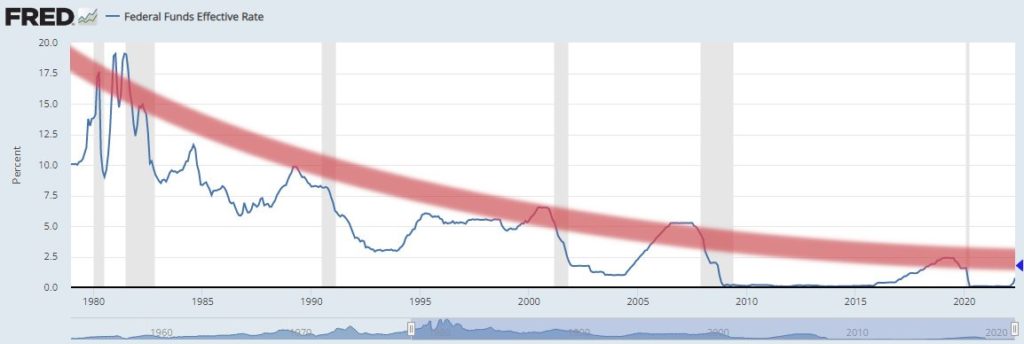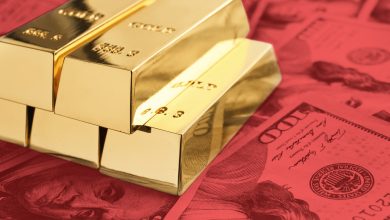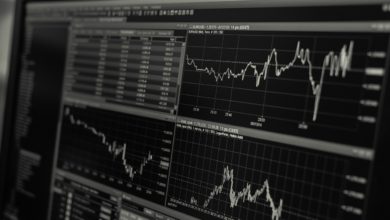How Long Will the Fed Hawks Keep Flying?

After the June FOMC meeting and the Fed’s 75- basis point interest rate hike, I argued that the central bank is totally winging it. Reading between the lines in the minutes from that June meeting seems to bear this out. The Fed appears to be in reaction mode. The question becomes what will it react to next? How long will the hawks keep flying as the economy tanks?
It’s pretty clear that the big rate hike was a knee-jerk reaction to hotter-than-expected May inflation data. You’ll recall that just weeks before the June meeting, a 3/4% rate hike wasn’t even on the table.
Then it was.
Near-term policy rate expectations shifted markedly toward the end of the period, particularly after the release of the May consumer price index (CPI) report. Ahead of the release of the report, market expectations reflected a broad consensus that there would be 50 basis point rate increases at both the June and July FOMC meetings. After the release of the higher-than-expected inflation data, policy-sensitive rates pointed instead to a considerable probability of 75 basis point moves at both the June and July meetings.”
In a nutshell, Powell & Company hoped inflation had peaked earlier in the spring, but with the “surprising” increase in CPI, the central bankers felt compelled to go big. Why? Because they are suddenly concerned about their credibility.
Many participants judged that a significant risk now facing the Committee was that elevated inflation could become entrenched if the public began to question the resolve of the Committee to adjust the stance of policy as warranted.”
In other words, the Fed is like a kid in the schoolyard concerned that if he doesn’t act tough, everybody will think he’s a chicken. The problem is, he’s not a tough guy. As my dad used to say, “He’s writing checks his body can’t cash.”
The minutes indicate the FOMC expects another big hike in July.
In discussing potential policy actions at upcoming meetings, participants continued to anticipate that ongoing increases in the target range for the federal funds rate would be appropriate to achieve the Committee’s objectives. In particular, participants judged that an increase of 50 or 75 basis points would likely be appropriate at the next meeting.”
But the central bank has a problem. It has already driven rates very close to the limit. If rates go much higher, there is every reason to believe the economy will completely implode. In 2019, 2.5% was the max. At that point, the economy got shaky, the stock market crashed, and the Fed went right back to loose monetary policy. (Not that 2.5% interest rates are particularly tight.) In 2019, the Fed cut rates three times and had already gone back to QE – even before the pandemic.
So, what makes anybody think the Fed can push rates to 3 or 3.5% today with even more debt in the economy?
And again, the Fed seems to be in reaction mode. There is no long-term plan. My guess is if we see any relief in the June CPI data, the Fed will start signaling that they’ve tightened enough. And some inflation relief seems likely. Commodity prices have dropped – most significantly the price of oil – in anticipation of a recession. This will likely relieve some of the price pressures in the economy.
But the relief will be temporary if the Fed pivots back to rate cuts and quantitative easing.
Speaking of quantitative easing, the Fed seems to have completely forgotten all about balance sheet reduction. The FOMC had signaled quantitative tightening would start in June.
It didn’t.
The Fed managed to shed less than $1 billion from its balance sheet during the first month of QT. Meanwhile, the Fed’s mortgage-backed security holdings actually increased by over $1 billion.
So while the tone coming out of the Fed might be hawkish – the reality is much less so.
And it will likely get even less so once the economic realities set in.
Federal Reserve Chairman Jerome Powell has been running around insisting the economy is strong enough to handle rate hikes.
But if you look at the strength of the economy, households are in very strong financial shape, they’ve still got a lot of excess savings – from forced saving of not being able to travel and things like that – and fiscal transfers. The same thing is true with business, with very low rates of default and lots of cash on the balance sheet. The labor market is also tremendously strong, still averaging very high job growth per month. Overall, the US economy is in the position to withstand tighter monetary policy, we think.”
Keep in mind that this message is brought to you by the same guy who gave us “transitory” inflation.
And this messaging seem just as dubious.
The Atlanta Fed has downgraded its Q2 GDP forecast to -2.1%. That would mean the economy has been in an official recession since the first of the year.
That brings us back to the burning question – will the hawks keep flying if it turns out we really are in a recession? Will the Fed be willing to go 50 or 75 basis points with the economy sliding and inflation seemingly cooling?
I don’t think so. As Rick Rule put it, the Fed will almost certainly chicken out in this inflation fight. The Fed is in reaction mode, and the reaction will likely be — run!
Call 1-888-GOLD-160 and speak with a Precious Metals Specialist today!
Buka akaun dagangan patuh syariah anda di Weltrade.
Source link








